
Zool: Ninja of the Nth Dimension is a platform game written for the Amiga by Gremlin Graphics and published in 1992. It was marketed as a rival to Nintendo's Super Mario and Sega's Sonic the Hedgehog. Zool was ported to other platforms and followed by Zool 2 in 1993.

Rise of the Robots is a fighting game released by Time Warner Interactive in 1994. Originally developed for the Amiga and DOS by Mirage's Instinct Design, it was ported to various video game consoles, including the Super NES, the Mega Drive, and the 3DO Interactive Multiplayer. The game includes a single-player mode in which the player assumes the role of the ECO35-2 Cyborg as he attempts to stop the Supervisor who takes over Electrocorp's facilities in Metropolis 4, and a two-player mode in which the second player controls a character chosen from among EC035-2's enemies.
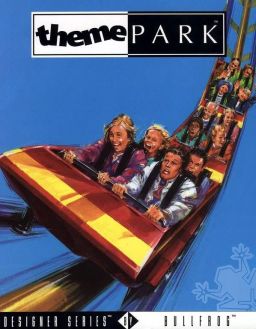
Theme Park is a construction and management simulation video game developed by Bullfrog Productions and published by Electronic Arts in 1994. The player designs and operates an amusement park, with the goal of making money and creating theme parks worldwide. The game is the first instalment in Bullfrog's Theme series and their Designer Series.
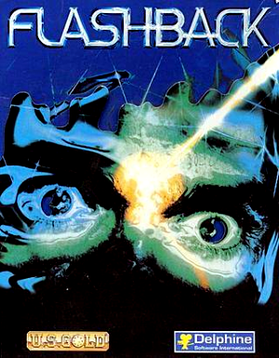
Flashback, released as Flashback: The Quest for Identity in the United States, is a 1992 science fiction cinematic platform game developed by Delphine Software of France and published by U.S. Gold in the United States and Europe, and Sunsoft in Japan.
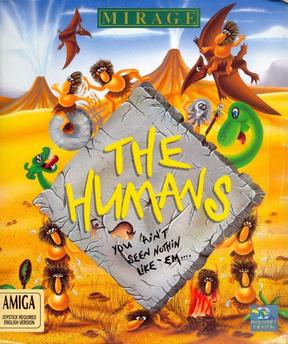
The Humans is a puzzle-platform video game developed by Imagitec Design in Dewsbury, England and originally published by Mirage Technologies for the Amiga in May 1992. It was later ported to other home computers and consoles. The goal of the game varies per level but usually revolves around bringing at least one of the player-controlled humans to the designated end area marked by a colored tile. Doing this requires players taking advantage of the tribe's ability to build a human ladder and use tools such as spears, torches, wheels, ropes and a witch doctor in later levels.

FIFA International Soccer is a 1993 association football video game developed by EA Canada's Extended Play Productions team and published by Electronic Arts. The game was released for the Sega Mega Drive/Genesis console in December 1993 and ported to numerous other systems in 1994. It is the first game in the FIFA series.

Jungle Strike is a video game developed and published by Electronic Arts in 1993 for the Sega Genesis. The game was later released on several other consoles such as the Super Nintendo Entertainment System (SNES), and an upgraded version was made for DOS computers. The Amiga conversion was the responsibility of Ocean Software while the SNES and PC DOS versions were that of Gremlin Interactive, and the portable console versions were of Black Pearl Software. It is the direct sequel to Desert Strike and is the second installment in the Strike series. The game is a helicopter-based shoot 'em up, mixing action and strategy. The plot concerns two villains intent on destroying Washington, D.C. The player must use the helicopter and occasionally other vehicles to thwart their plans.
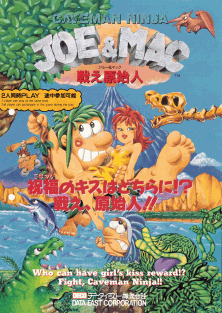
Joe & Mac, also known as Caveman Ninja and Caveman Ninja: Joe & Mac, is a run and gun platform game released as an arcade video game by Data East in 1991. It was adapted for the Super NES, Mega Drive/Genesis, Nintendo Entertainment System, Game Boy, Amiga, Zeebo, Nintendo Switch, and IBM PC compatibles.

The Lion King is a platform game based on Disney's 1994 animated film The Lion King. The game was developed by Westwood Studios and published by Virgin Interactive Entertainment for the Super NES and Genesis in 1994, and was ported to MS-DOS, Amiga, Game Gear, Master System, and Nintendo Entertainment System. The Amiga, Master System, and NES versions were only released in the PAL region. It is the final licensed NES game worldwide. The game follows Simba's journey from a young cub to the battle with his uncle Scar as an adult.

Puggsy is a 1993 puzzle-platform game developed by Traveller's Tales and released by Psygnosis on the Mega Drive and Mega-CD consoles, as well as the Amiga home computer. Puggsy is the name of the title character, an orange space hopper–like alien who landed his spaceship on The Planet, intending to return home until his spaceship was stolen by the raccoon natives of the planet.

The Addams Family is a platform game based on the 1991 film of the same name and developed and published by Ocean Software. It was released for home consoles such as the Super Nintendo Entertainment System, computers such as the Amiga, and handheld consoles like the Game Boy.
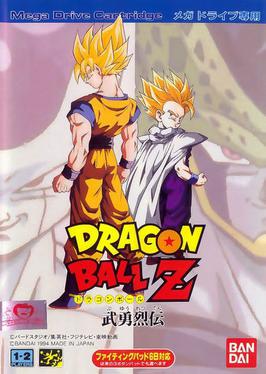
Dragon Ball Z: Buyū Retsuden is a 1994 fighting video game developed and published by Bandai and Ecofilmes for the Sega Mega Drive. Based upon Akira Toriyama's Dragon Ball franchise, it is the only game in the series released for the Mega Drive, following the Frieza and Cell sagas. Its gameplay has been described as a combination of the original Super Butōden and Super Butōden 2, consisting of one-on-one fights using a three-button configuration, featuring special moves and two playable modes.

Mr. Nutz: Hoppin' Mad is a side-scrolling platform game developed by German team Neon Studios and published by Ocean Software for the Amiga in 1994. The player controls Mr. Nutz, an anthropomorphic red squirrel wearing shoes, gloves and a cap, who must stop chickens from outer space that are trying to take over the world.
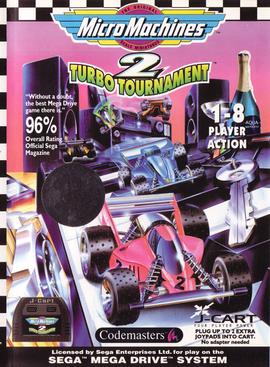
Micro Machines 2: Turbo Tournament is a 1994 racing video game developed by Supersonic Software and published by Codemasters for the Sega Mega Drive. The sequel to Micro Machines, the game is themed around Galoob's Micro Machines toys, and players race around environments in miniature toy vehicles. Micro Machines 2: Turbo Tournament adds new vehicles and game modes, and the Mega Drive version was released on J-Cart, enabling up to eight players without a multitap.
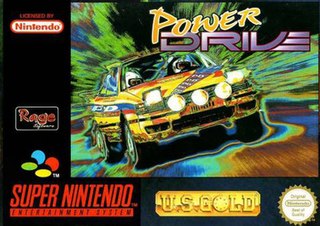
Power Drive is a 1994 racing video game developed by Rage Software and published by U.S. Gold. The player competes in rally driving in various countries.

The Lost Vikings is a puzzle-platform game developed by Silicon & Synapse and published by Interplay. It was originally released for the Super NES in 1993, then subsequently released for the Amiga, Amiga CD32, MS-DOS, and Mega Drive/Genesis systems; the Mega Drive/Genesis version contains five stages not present in any other version of the game, and can also be played by three players simultaneously. Blizzard re-released the game for the Game Boy Advance in 2003. In 2014, the game was added to Battle.net as a free download emulated through DOSBox. In celebration of the company's 30th anniversary, The Lost Vikings was re-released for Microsoft Windows, Nintendo Switch, PlayStation 4 and Xbox One as part of the Blizzard Arcade Collection in February 2021.

Micro Machines is a racing game developed by Codemasters and originally published by Camerica for the Nintendo Entertainment System in 1991. Themed around Galoob's Micro Machines toys, players race in miniaturised toy vehicles around various environments. The game is the first installment in the Micro Machines video game series.

Sailor Moon is a side-scrolling beat 'em up video game originally developed and released by Angel in Japan on August 27, 1993 and later in France and Spain in November 1994 by Bandai for the Super Nintendo Entertainment System. It is the second game to be created by Angel based upon Naoko Takeuchi's Sailor Moon shōjo manga and anime series, the first for the Super NES and one of the few Sailor Moon titles that had an official international release.

Mr. Tuff is an action-platform video game developed by Sales Curve Interactive (SCi) for the Super Nintendo Entertainment System. Originally planned for a 1994 release, it was canceled until it was published by The Retro Room in 2023. Set in a future where humanity abandoned the Earth and migrated to the planet Utopia, military androids took over and enslaved the stranded domestic robots. The player controls a demolition robot named Mr. Tuff across six islands, exploring and searching each level for items and power-ups, while fighting enemies and defeating bosses.


















